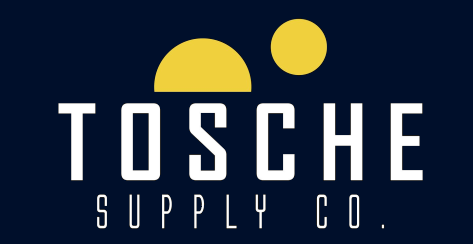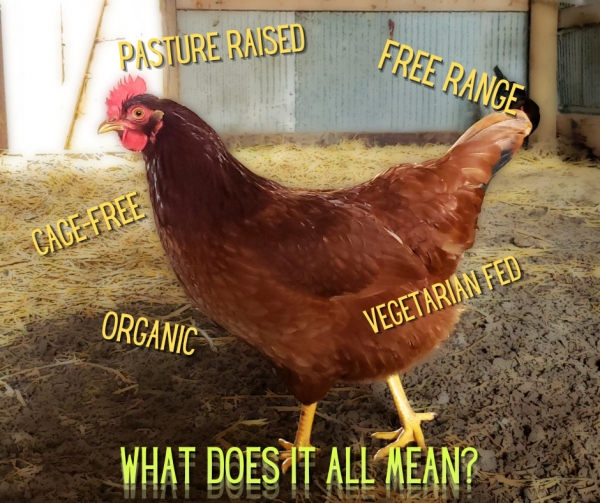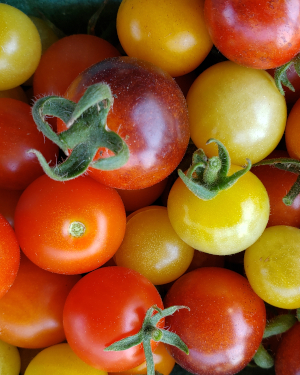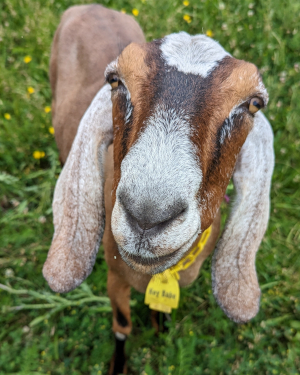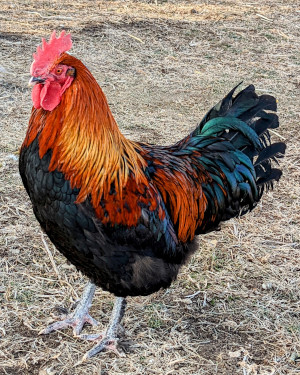thousands of chickens housed together, all living in tiny cages where they don't have room to move around, they never see the sun, often being fed chicken byproducts along with their grain, and their eggs are washed in chlorine or lye to remove the bacteria that comes from their unsanitary living conditions. It's not a good life for a chicken.
But what's the difference between all the different labels - cage-free, free range, vegetarian fed, organic, pasture raised, etc?
And how do you know which eggs come from chickens raised in a manner you'd support? (Short answer: buy your eggs directly from a producer who's willing to talk to you about their practices and let you see their operation.)
First, let's take a look at some of the different things you may see
on an egg carton label, and what they may mean.
Cage-Free
For eggs to be labeled cage-free, the only requirement is that they not be kept in a cage. They may still be housed in a building with thousands of other birds, with about 1 square foot of space per bird, never seeing the light of day.
Free Range
For eggs to be labeled free range, chickens must be allowed access to the outside. Chickens may have 1.5-2.0 square feet of space, and they may only have a door leading out to a concrete pad, which they may walk out onto if they choose (but often they never do). Note, a lot of small farms use this term to mean that the chickens are able to go outside, unconfined, and roam around as they choose, but that's not required for the term to be used in labeling.
Vegetarian Fed
This pretty much only means that chickens are not fed animal byproducts. But chickens are omnivores and will happily (and voraciously) eat bugs, worms, frogs, and other small critters if they have the chance. So you can interpret this to mean that a vegetarian fed chicken has no access to the outdoors, or it would definitely help itself to tasty bugs and worms.
Organic
This is a USDA regulated label, and requires that the chickens' feed be grown without synthetic pesticides, herbicides, or fertilizers, the chickens must be uncaged and have access to the outside (like "free range," this may only mean that they have access to a door leading out onto a concrete pad.) There are no space requirements per bird to use the organic label.
Pasture Raised
These chickens live outside full time in mobile outdoor shelters that are frequently moved to ensure the birds have access to new, fresh forage. It's the best option you're going to find on a label as far as animal welfare and hygiene.
So how do we raise OUR chickens?
Living Arrangements
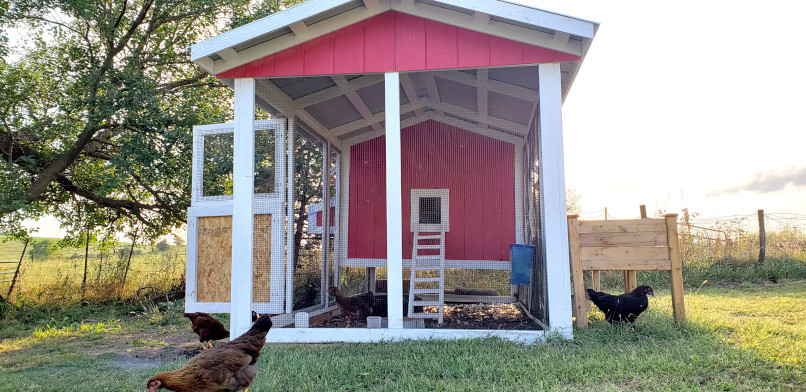
At night, they're in a raised chicken coop. They walk up the ladder at dusk to go into their coop, which always has 6-8 inches deep of pine shavings that are turned regularly to ensure that there isn't a build-up of poop on the floor. They have roosting bars that they choose to sleep on.
In the morning, when the sun is up (usually between 7-8 am) I open the small door of their coop to their enclosed run, a large enclosure with a woodchip floor that's protected from predators by hardware cloth, and I give them about as much feed as they'll eat in a day, for them to eat throughout the day. They stay in the run until midday (usually between 10am and 1 pm), until most of them have laid their eggs, then I open the door to the run and let them have free access to anywhere on our property they want to go.
On chilly days, they may choose to go in the barn for a while, and if it's nice (and sometimes even when it's not), they'll wander around about 2 of our 5 acres, eating basically whatever they want. Bugs, frogs, grass, weeds, (not my garden, it's fenced off from them!) etc.
They can go back into their run or coop at anytime if they want, the door is open for them, but usually they only go back in during the day if they want to drink water, eat their feed, or lay an egg.
Around evening time, they all head back into the run, and I close the door so that no evening-active predators can follow them in. Then around sunset, they all head up the ladder and into their coop, and I close the little door to keep them safe for the night.
We've tried to give them the best living situation possible - shelter when they want it, safety and security at night when they're most vulnerable, and the ability to roam around doing whatever they want during the majority of their waking hours.
Feed
We have chosen to give our birds only certified organic feed. Since most conventionally grown corn and soy products (the primary ingredients in most chicken feeds) are sprayed with glyphosate, I've chosen to avoid supporting that practice by buying organic. I am not a chemical scientist, and I'm not about to make any kind of claims about the safety to people of eating crops that were sprayed with glyphosate, but as a business, I don't feel right supporting practices that I consider to be ecologically unsound. I don't think it's good for the environment, and I don't want to put a product into the world (eggs) that came about by me investing in practices I don't agree with.
Our eggs are not certified organic; it's not a path I've chosen to pursue at this time, and as a few of our birds arrived in our care past day two of their life (our last batch arrived at three weeks old), they wouldn't be eligible for the certified organic label anyway. Our pasture would also need to be certified organic, and we haven't been on it/managing it for the requisite number of years yet. Perhaps someday, after all the birds in our care were hatched on-farm, we may decide to pursue certification.
We use a 22% protein grower crumble for the chickens' first 6-8 weeks, then switch to a 19% grower crumble until they're moved out of the brooder and into the coop. Our adult birds get a 17% protein pellet, not a layer pellet. We currently have younger birds and roosters mixed in with the flock, and the high calcium of a layer feed is detrimental to their health. We do supplement with free-choice crushed oyster shell at all times, and give crushed eggshells when we have them. When the roosters are separated out into breeding groups, we'll feed a 16% protein layer pellet to the laying hens only. And they all have crushed granite grit with probiotics available free-choice at all times, and of course fresh, cool water, which is changed out mid-day on the really hot days of summer, since chickens don't like to drink warm water when they're hot.
Lately, there has been a popular chicken-feeding trend in corn-and-soy-free feed, and we've chosen not go down that path. I think that unless one is so allergic to corn and soy products that even the egg of a chicken who ate those products causes a reaction, the corn-and-soy-free is more of a fad than it is a benefit to the bird.
It's difficult to get proper chicken dietary caloric and protein requirements to be met in a corn-and-soy-free feed, and most alternative protein sources (as opposed to soy meal), tend to be very fine particles that often chickens won't eat, because they're too small. So they get discarded, and the chicken doesn't get adequate protein.
The health of our birds is very important us, for their own sake as well as for the eggs they lay, and we don't feel like most "cheap" feeds are as optimal as they could be. Lysine and methionine requirements vary during a chicken's lifetime (and laying cycle) and we pay particular attention to the labels on the feeds we choose. (Frankly, more attention then we pay to the labels on our own food!)
And of course, as they are free to wander throughout the day, they will supplement their own diet with green matter and live protein sources as their appetite directs them!
